How to Organize an Important Documents Binder
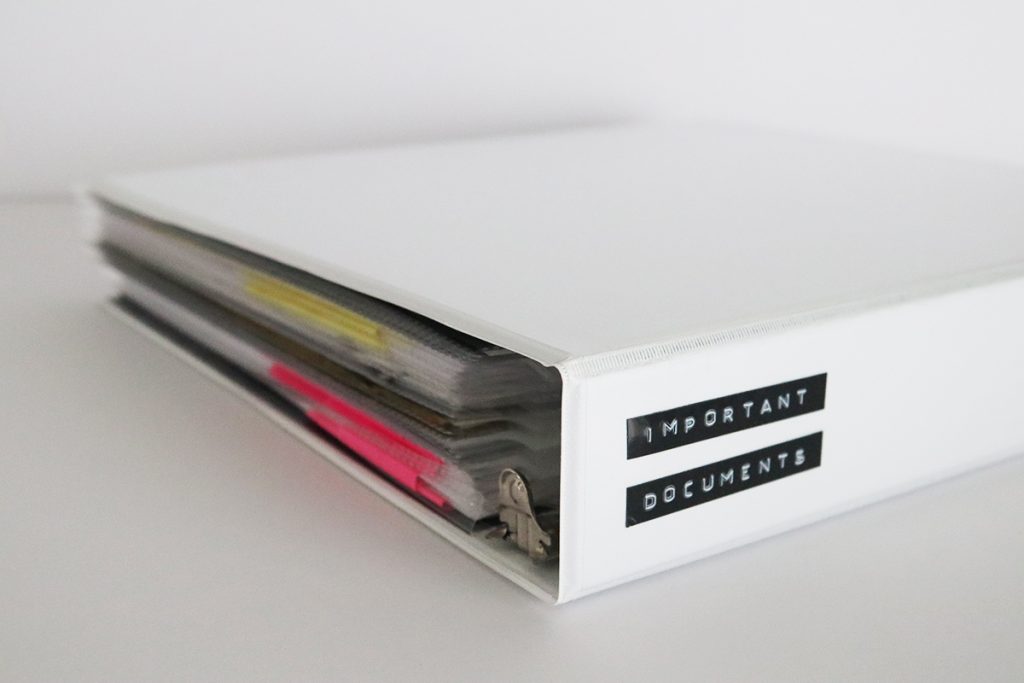
There are a number of ways to organize important documents. You can use a traditional file system, you can store them in a safe somewhere in your home, you can store them in a safety deposit box at a bank, or you can do a medley. When it comes to organizing important items, I am most attracted to the simplest secure option. After hours of research I landed on a transportable, organized important documents binder.
Quick Navigation
Benefits of an Important Documents Binder
Easy to Transport
One huge benefit of a “grab and go” binder is transportability. This benefit is obvious when we think of emergency scenarios (fire, flood, or otherwise). It’s also a great benefit if you are a person or family that moves frequently. A binder is easy to store securely in a carry-on that you can keep on your person at all times when in transit.
Easy to Store
A 1” or 1.5” binder can be easily stored in a small safe in your home, in a hotel safe, or elsewhere. It’s also helpful that the documents within an important documents binder are organized in plastic protective sleeves. This will help keep the documents in your binder (mostly) protected in case of accidental spills or accidental contact with liquid.
Provides Peace of Mind
Knowing that you have every document organized in one place can bring tremendous peace of mind. I like that in the case of an emergency, I know that my husband or I can quickly and easily grab our binder and get our family to safety. Because we store our binder in a fire and water-proof safe, I can rest assured that our important documents won’t be harmed in the case of a natural disaster when we aren’t at home.
Important Documents Binder Contents and Categories
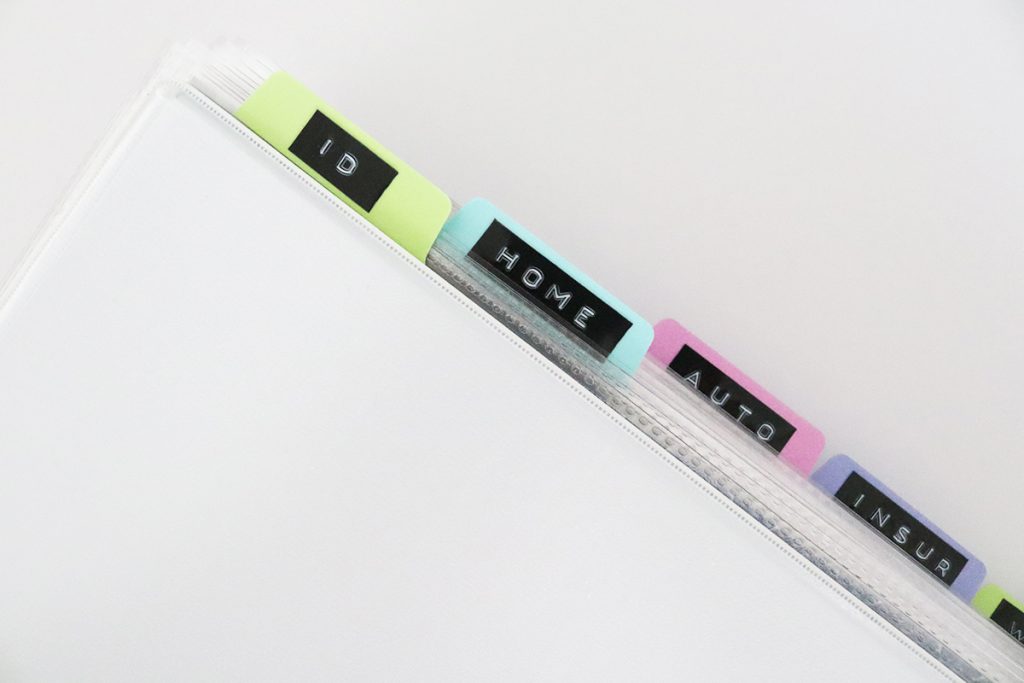
Important Documents to Keep Safe
Below are the important documents most households will want to keep safe, secure, and accessible:
- Birth Certificates
- Social Security Cards
- Passports
- Marriage Certificate / Divorce Records
- Vehicle Titles and Registration
- Property Deeds and Titles
- Living Will, Last Will and Testament
- Insurance Policies
- Appraisals of high value items you own
Additional documents that could be helpful in an emergency situation:
- Emergency phone numbers – these would be helpful in a situation where your phone dies and the power is out. Do yourself a favor and save these in your phone as well:
- Close friends and family
- Doctors and hospitals
- Poison control
- Utilities
- Insurance providers
- Financial accounts and providers
- Thumb drive – record and save images and/or video of the contents within your home on a small thumb drive to use for insurance purposes
- Financial account information – account numbers, phone numbers, and passwords
- Other personal account information – email, social media, and other passwords so other family members can access these accounts should you ever become unable to for any reason
- Family ID Forms – these could be used in the horrible instance that a family member or child were abducted or goes missing and you don’t have access to your phone. It can be one way to prove that a found family member belongs to you as well as a way to quickly provide police important identifying information to aid in a search.
- Recent individual photos
- Recent family photo
- List of physical characteristics such as eye color, hair color, distinct markings, etc.
- DNA (e.g. a few pieces of hair)
- Fingerprints
Every household is going to be unique. For instance, you may have a family member with important medical records you need to keep, or maybe you rent your home so homeownership documents are irrelevant. Use these lists as your starting point and customize as necessary.
Important Document Categories
Once you have collected all of your most important paperwork, you’re going to need a categorization system. I use sticky tabs in my binder to specify each category.
Suggested categories:
- Identification
- Birth Certificates
- Social Security Cards
- Passports
- Marriage Certificate
- Family ID Forms
- Home
- Property Deed and Homeownership Documents
- Insurance
- Thumb drive with images and/or video of the contents within your home to use for insurance purposes
- Appraisals of high value items that you own
- Auto
- Vehicle Titles
- Registration
- Insurance
- Insurance
- Life Insurance Policies
- Health Insurance Information
- Will
- Living Will, Last Will and Testament
- Emergency
- Emergency Phone Numbers
Collect Your Binder Supplies
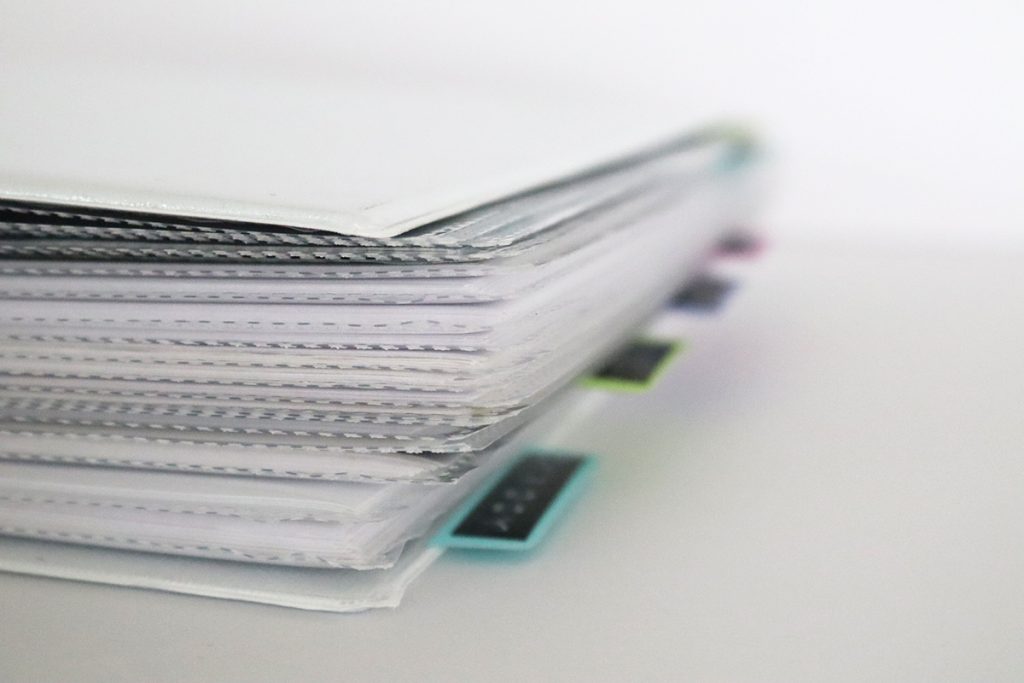
Now that you’re ready to file, it’s time to equip yourself with the necessary supplies.
Binder
The size of your binder will depend on the amount of paper you have to file. I have a 1.5” binder that works well for my young family of four.
Page Protectors
You don’t want to use just any old page protectors. If possible, I recommend investing in page protectors that have the pocket enclosure at the top. This will help keep loose papers in place even if the binder gets jostled around by accident. The last thing you want is to lose any portion of these documents while in transit.
Take it a step further and use a piece of washi tape to make sure that the top flap stays closed!
Tabs
I use sticky tabs attached to the page protectors to denote each category within my binder. I find that a lot of binder tabs are the same width as page protectors, rendering them fairly useless. The sticky tabs are always visible and effective.
Choose a Secure Storage Location
Determining the most secure location to store such important documents was up for debate in most articles I read on the subject. Ultimately, your choice is going to depend largely on your current housing situation. If you share a small space with roommates, you might want to invest in a small safe to hide somewhere in your room. If you travel frequently and don’t have a permanent “home base” perhaps it makes more sense to store your documents in a safety deposit box at a bank.
But with that said, I would venture to bet that most people reading this article would fare just fine by investing in a quality fire-proof and water-proof safe to store somewhere well hidden but still accessible in their home.
If you choose to invest in a small safe, see if you can find one that comes with a bolt down kit to secure it to the floor or the wall. Doing so will lessen the chances of your entire safe being taken from your home in the unfortunate possibility of a burglary.
Safe Box Options
I personally like this SentrySafe box because 1) it swings open so I can store other objects on top of it and 2) it allows for key entry OR combination entry in case a key is not readily accessible or if you need to allow a close friend or family member to access the contents in an emergency scenario.
Below are a few additional options worth considering:
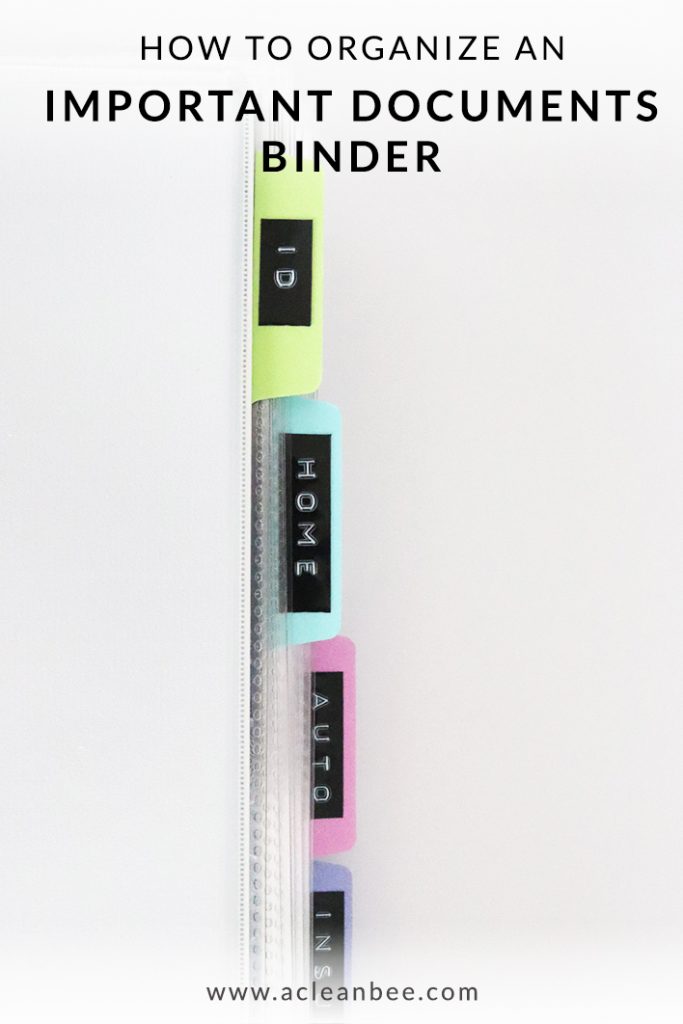


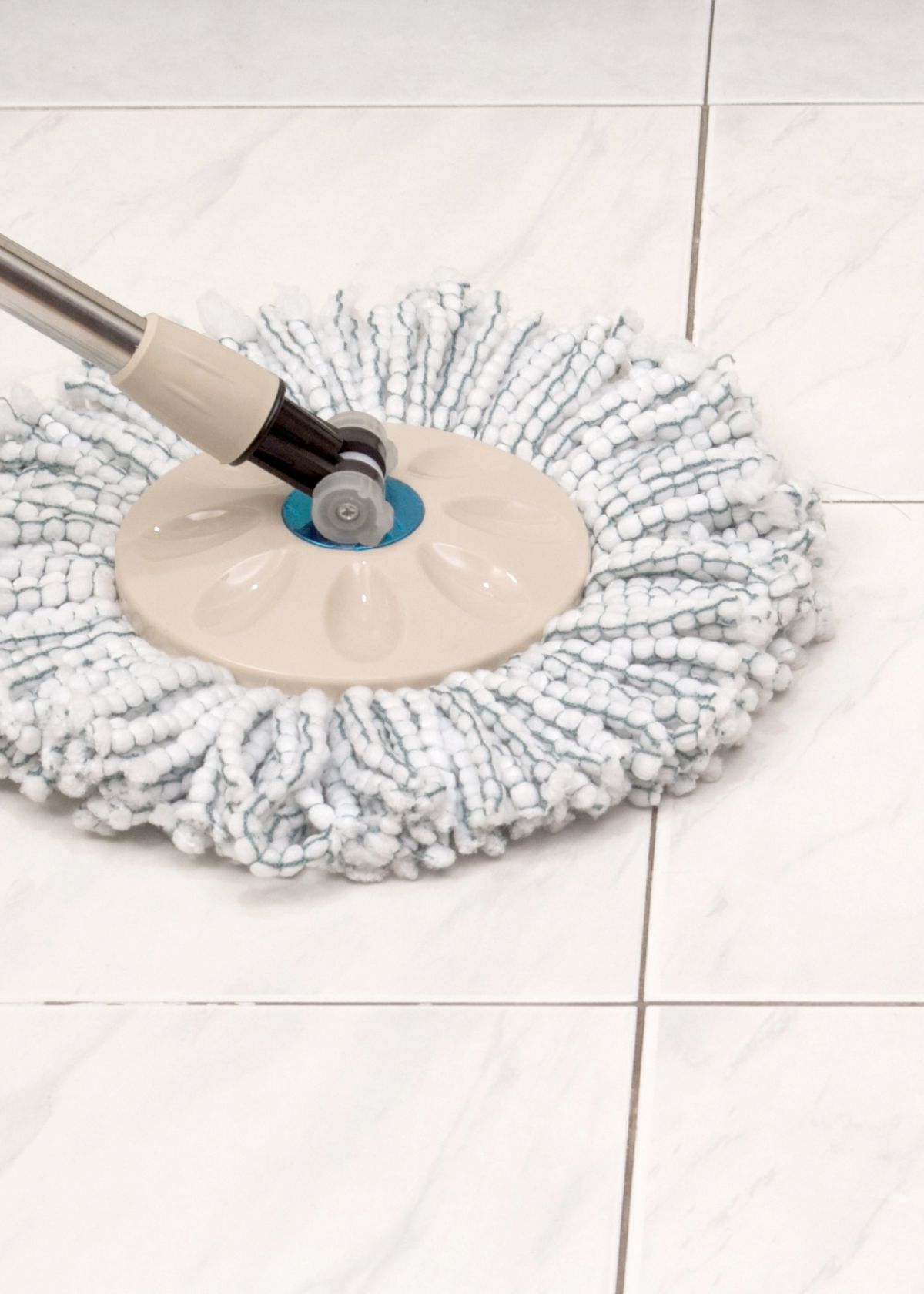

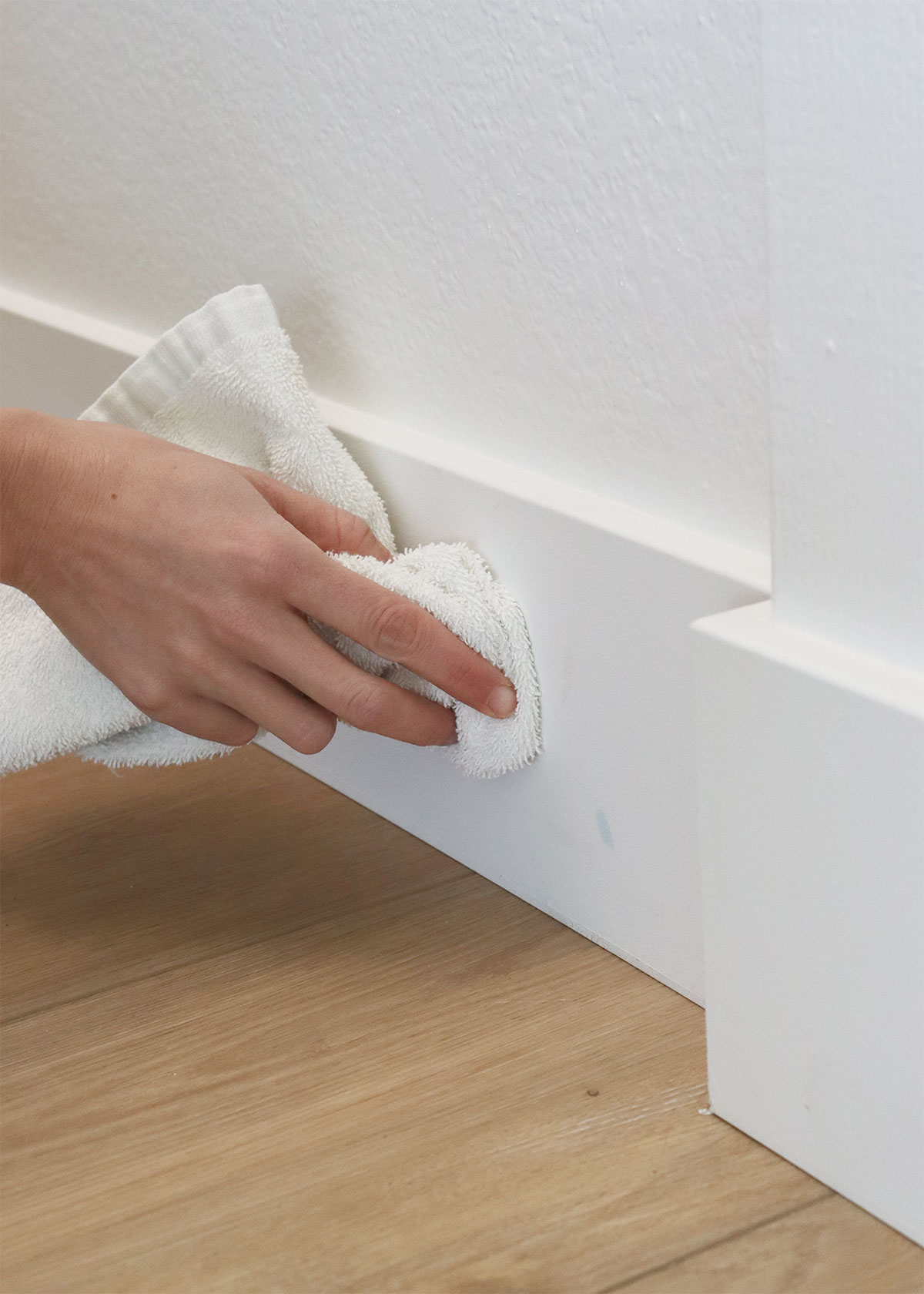
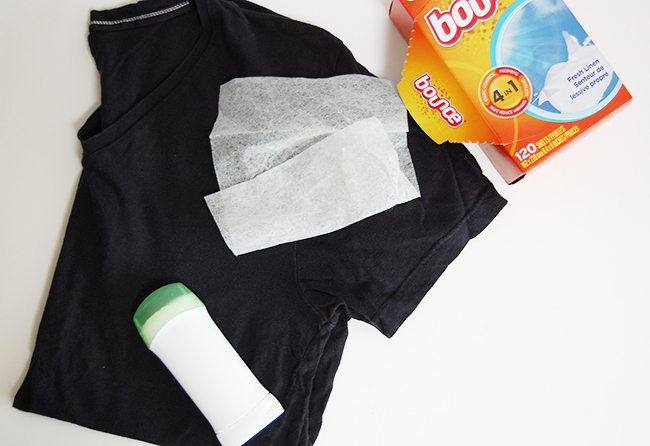

Hey, how’s it going, how did you make those little black text labels in the binder?
Hi Jack! I use a label maker by Dymo (you can purchase here: https://amzn.to/3BEv7IY) works great!